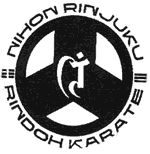On the Relation between Way, Method, and Technique HIROKAWA Hiromu |
Each specific method (waza) and each form (kata) represents one motion in a global succession of movements. Following the changes that occur in attack and defense, they become one with technique (jutsugi). In the practice (shugyo) of martial arts, the teacher begins by explaining the way (michi), thus already showing indirectly where the essence lies (gokui no tan). When the student appears to have mastered the essence through repeated practice, the teachers uses means (hoho) to make him realize that what he was taught from the very beginning was already the essence. This is what is meant by "starting from the way to enter the technique." In today's martial arts, based on competition and modeled after Western sports, the greatest emphasis is placed on physical speed and muscular strength. What is stressed is the improvement of the reflexes through basic exercises and the development of physical stamina through weight training. This type of practice, which neglects the concepts of way and technique that were originally part of all martial arts, may result in a brief climax of strength during one's younger days, but this is almost inevitably followed by a quick decline; those who suffer no aftereffects from such unnatural training should consider themselves lucky. What makes Rindo what it is is not its distinctive techniques. Rather it is the principle (riho) lying at the core of these techniques that makes it different. If a movement accords with this principle then it is considered a Rindo technique. In this way, undue attachment to specific methods (waza) naturally disappears. When technique falls away one is for the first time able to respond appropriately to any change in the opponent's movements. This is what is meant by "the technique returns to the way." Regarding attack (atemi), one must not be attached only to fist techniques (ken) or to kicking techniques (keri). One reacts with the whole body, so that anywhere can become a weapon. One can, for instance, repel a rushing opponent by using one's back, or drop him with the shoulder at the precise moment he passes you. To advance in Rindo, students must learn to perceive the vital energy (ki) and develop the physical technique (shintai giho) for attaining perfect union of body and mind (shinjin ichinyo). Before such understanding is gained it is of no benefit to criticize and theorize based upon one's rational understanding. Search for the way! Rather than practicing for three years, it would be better to spend three years looking for a good teacher. You should never choose a teacher because he lives nearby, because his dojo is on your way home, or because the teaching schedule nicely matches yours! Translated from the Japanese by Michel MOHR and revised by Thomas KIRCHNER June 5, 2000 |
